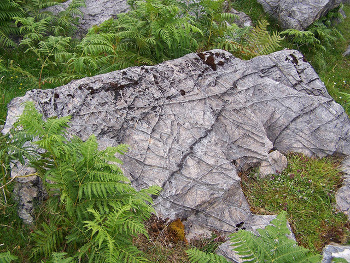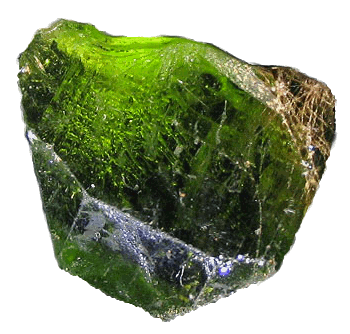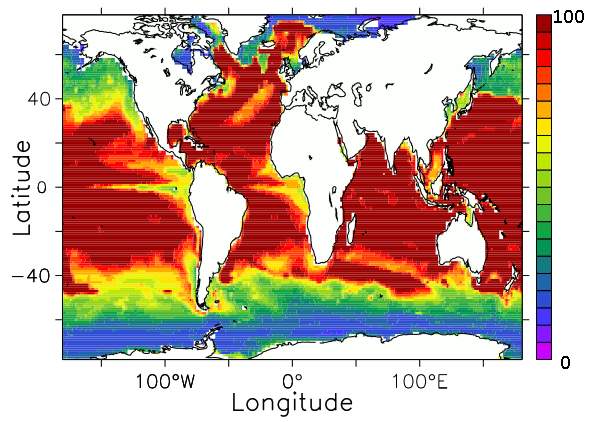Sinking Carbon
January 30, 2013
In the last few decades, the
common man has received a free course in
economic principles through life experiences. Although I took a course in
economics as an
undergraduate based on the
venerable book by
Paul Samuelson, the way economics really happens didn't hit home until the
Reagan presidency.
A part of Reagan's legacy is
Reaganomics, a version of a very old economic idea called
supply-side economics. The idea of supply-side economics is that lower
taxes and less
regulation allow businesses to flourish, thereby bringing economic benefit to everyone. Such benefits would be manifest in lower
unemployment and a greater supply of low cost
goods and services.
The interesting thing is that the
converse principle is also reasonable, that giving
consumers lower taxes will leave them more money to buy goods and services. This would benefit the consumers, and also the businesses with which they deal.
Chemists will find an analogy of these competing ideas in
Le Chatelier's principle. According to Le Chatelier's principle, you can influence the
product yield of an
equilibrium reaction by changing the
concentrations on either side of the
chemical reaction. You can either push more product or pull more product.
Reducing the concentration of
carbon dioxide (CO
2) in the
atmosphere can be done in two ways. We can strive to reduce
CO2 emissions, which appears to be too difficult for our
technological civilization; or, we can remove the CO
2 from the atmosphere.
Carbon capture is the easiest means of
carbon sequestration, since we get the carbon before it's diluted in the atmosphere, but there are other means of global CO
2 removal.
In a
previous article (Ordovician Carbon Sinks, February 28, 2012), I wrote how 460 million years ago atmospheric carbon dioxide was about twenty times the present level, and the
average global temperature was 5
°C (9
°F) higher than it is now.[1-3] Shortly thereafter,
geologically speaking, in the
Late Ordovician, there was a tremendous cooling of the
Earth leading to
glaciation.
According to
climate models, glaciation during that period was only possible if the atmospheric CO
2 level had dropped to about eight times its present value. The cause of this CO
2 drop was the initial dispersal of
plants on
land masses, but not just for the reason you might think.
Although plants do
fix carbon from the atmosphere, this early vegetation caused
weathering of the
Earth's crust. These plants exposed a greater surface area of crustal material, which allowed formation of
carbonates from the atmospheric CO
2.[1-3]

This outcrop of weathered bedrock is located at 57° 14' 37.88" N, 5° 56' 38.97" W, near Beinn na Caillich on the Isle of Skye.
(Photo by Richard Dorrell of geograph.org.uk, via Wikimedia Commons.)
The plants also removed
calcium,
magnesium,
phosphorus and
iron from rocks, which made the rocks more chemically active.[1-3] Labile
nutrients from either the vegetation or the weathered rock washed into the oceans and promoted the growth of marine vegetation.[1-3]
A recent study in an
open access article in
Environmental Research Letters[4] examines whether
mankind could perform the same process on an
industrial scale as a means to combat
global warming. The study was conducted by scientists at the
Alfred Wegener Institute for Polar and Marine Research (
Bremerhaven, Germany).[4-5]
The study focused on
olivine, an abundant magnesium-
silicate mineral that weathers quickly. On land, it's dissolved by the
carbonic acid created by the combination of
rainwater and atmospheric CO
2. Olivine dissolved in surface
ocean water sequesters 0.28
grams of carbon per gram of olivine.[4] Other chemicals in olivine, such as iron, will have a further affect on carbon sequestration by fertilization of marine plants, such a
phytoplankton, which would sequester carbon when it dies and sinks to the ocean floor.[5]

So, that's why it's called olivine!
A mineral specimen of olivine in the Natural History Museum, London.
(Photo by Aram Dulyan, via Wikimedia Commons.)
Upon crunching the numbers, this doesn't look like the quick fix once imagined. Three
gigatons of olivine would be required annually just to offset nine per cent of current
anthropogenic CO
2 emissions.[5] The olivine would need to be ground to
micrometer-sized particles, a process which will consume
energy. Using the present mix of energy sources would result in the emission of CO
2 which is 30% of what the olivine would remove.[4-5]
Says
Peter Köhler, the lead author of the study,
"If this method of geoengineering was deployed, we would need an industry the size of the present day coal industry to obtain the necessary amounts of olivine. To distribute this, we estimate that 100 dedicated large ships with a commitment to distribute one gigaton of olivine per year would be needed... We assess this approach as rather inefficient.[5]
One distribution option is to put the olivine in the
ballast tanks of
commercial vessels. As shown in the figure, most
shipping lanes lie in regions favorable for olivine dissolution.[4]

Relative dissolution, on a percentage basis, of 1 μm olivine grains in ocean water. (Fig. 3d of ref. 4, licensed under the Creative Commons Attribution-NonCommercial-ShareAlike 3.0 licence.)[4)]
If we save the world from carbon, what sort of world will it be? Getting back to the economics topic of the first few paragraphs,
Walter Reuther, president of the
United Auto Workers, was given a tour of an
automated automobile assembly plant in 1958. When asked whether he was concerned that such automation would put all his union members out of work, Reuther replied that machines don't buy cars.[6]
References:
- Sid Perkins, "Did Plants Freeze the Planet?" Science Now, February 1, 2012.
- Timothy M. Lenton, Michael Crouch, Martin Johnson, Nuno Pires and Liam Dolan, "First plants cooled the Ordovician," Nature Geoscience, vol. 5, no. 2 (February 1, 2012), pp. 86-89.
- First plants caused ice ages, University of Exeter Press Release, February 1, 2012.
- Peter Köhler, Jesse F Abrams, Christoph Völker, Judith Hauck and Dieter A Wolf-Gladrow, "Geoengineering impact of open ocean dissolution of olivine on atmospheric CO2, surface ocean pH and marine biology," Environmental Research Letters, vol. 8, no. 1 (January-March, 2013). Open access article, with PDF file, here.
- Michael Bishop, "Researchers analyse 'rock dissolving' method of geoengineering," Institute of Physics Press Release, January 21, 2013.
- How Will You Get Robots to Pay Union Dues? How Will You Get Robots to Buy Cars?, Quote Investigator.
Permanent Link to this article
Linked Keywords: Common man; macroeconomics; economic principles; economics; undergraduate education; Economics textbook; Paul Samuelson; Ronald Reagan; President of the United States; presidency; Reaganomics; supply-side economics; taxes; regulatory agency; regulation; unemployment in the United States; goods and services; converse; consumer; chemist; Le Chatelier's principle; product; yield; equilibrium; reaction; concentration; chemical reaction; carbon dioxide; atmosphere of Earth; greenhouse gas; CO2 emission; technology; civilization; carbon capture and storage; carbon sequestration; average global temperature; Celsius; °C; Fahrenheit; °F; geologic time scale; Late Ordovician; Earth; glacial period; glaciation; climate model; plant; supercontinentvland mass; carbon fixation; weathering; Earth's crust; carbonate; Beinn na Caillich; Isle of Skye; Wikimedia Commons; calcium; magnesium; phosphorus; iron; nutrient; open-access journal; open access article; Environmental Research Letters; human; mankind; industrial scale; global warming; Alfred Wegener Institute for Polar and Marine Research; Bremerhaven, Germany; olivine; silicate; mineral; carbonic acid; rainwater; ocean water; grams; phytoplankton; olive color; Natural History Museum, London; gigaton; human impact on the environment; anthropogenic; micrometer; energy; Peter Köhler; ballast tank; cargo ship; commercial vessel; sea lane; shipping lane; Creative Commons Attribution-NonCommercial-ShareAlike 3.0 licence; Walter Reuther; United Auto Workers; automation; automobile.